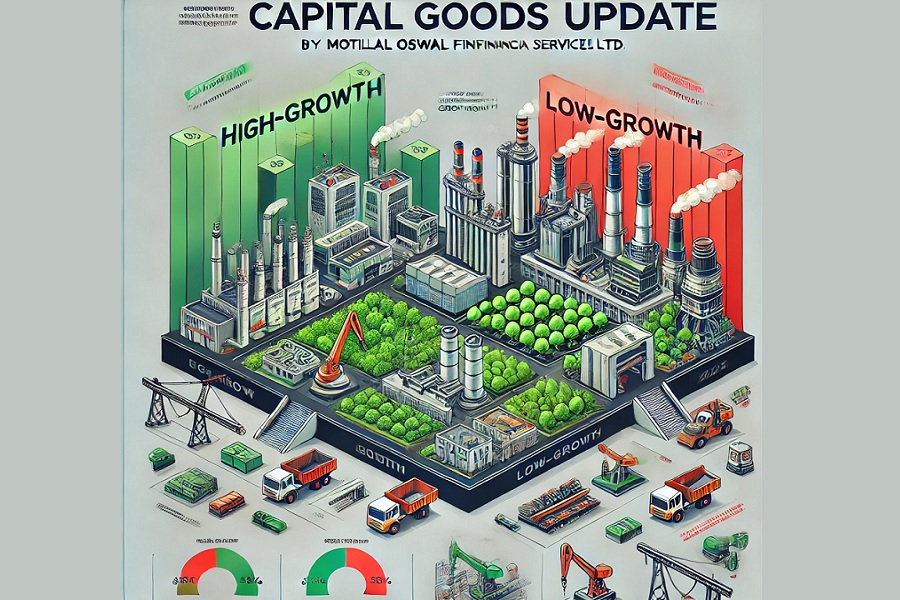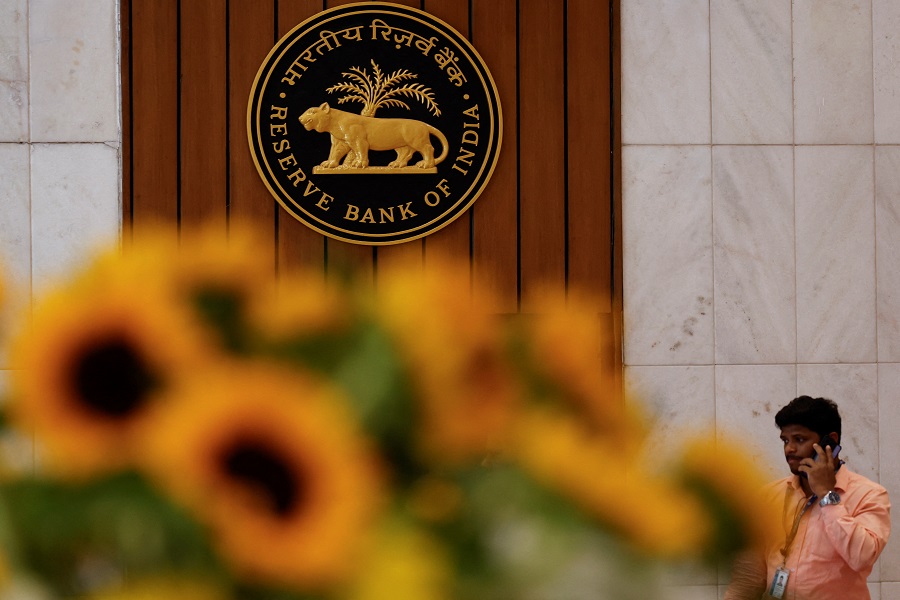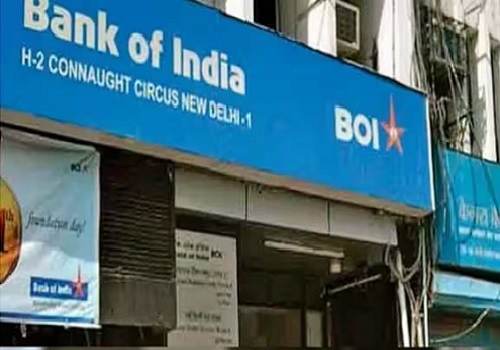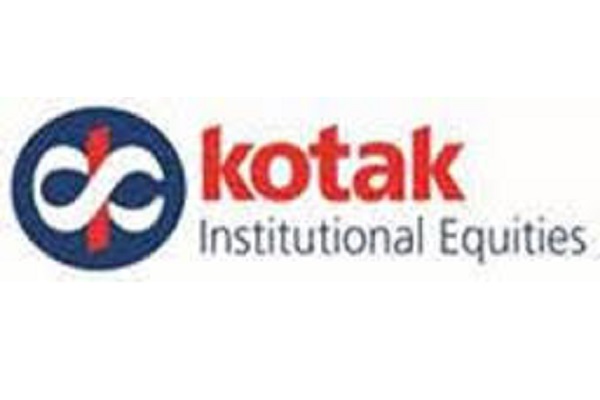Banking & Finance Sector update : MOFSL BFSI picks 2.0: Earnings to gain traction from 2H by Motilal Oswal Financial Services Ltd

MOFSL BFSI picks 2.0: Earnings to gain traction from 2H
Prefer private banks over PSBs; NBFCs and non-lending financials well positioned
FY25 was a challenging year for the BFSI sector. Over the past 12 months (Jun’24-25), Bank Nifty and the Nifty Financial Index posted returns of 8.1% and 14.6%, respectively, compared with 5.4% for the Nifty-50. Several BFSI stocks delivered healthy double-digit returns over the past 12 months, such as HDFCB (17%), ICICI (23%), KMB (23%), FB (17%), PNB HF (24%), HomeFirst (20%), BAF (25%), HDFC Life (28%), BSE (187%) and Nuvama (33%). With a cumulative 100bp reduction in the repo rate by the RBI, FY26 earnings will start on a softer note for banks; however, with a gradual repricing of deposits and benefits from the CRR cut effective Sep’25, we estimate the earnings trajectory to recover from 2HFY26 onward. NBFCs, especially vehicle financers, will benefit from rate cuts, as lower funding costs will result in NIM expansion of 10-25bp across lenders and help the sector pivot back to growth. Non-lending financials will continue to provide attractive investment opportunities over the year. After the recent outperformance by the sector, we have further narrowed down our top ideas and selected 16 stocks in our MOFSL BFSI top picks 2.0 from our coverage of ~70 names.
Banks: Earnings growth to bottom out in 1HFY26 and recover thereafter
* Banking system has witnessed a sharp deceleration in credit growth in May’25. Credit growth plunged to ~8.9% YoY from avg. 16% seen over the prior three years. This moderation is largely driven by a slowdown in unsecured retail lending as banks have recalibrated their risk appetite amid rising delinquencies in the unsecured retail and MFI segments and high funding costs. An increased focus on asset quality has led to tighter underwriting standards across lenders. Against this backdrop and a modest economic growth outlook, we expect credit growth to remain subdued at 11.5% YoY in FY26E, before gradually recovering to 13% in FY27E.
* The sharp 100bp reduction in repo rates will pose near-term challenges for the sector, as it will drag down lending yields and compress NIMs. However, this pressure will likely be transitory, as a gradual moderation in funding costs and the benefits from the CRR cut will begin to support the NIM trajectory from 2HFY26 onward. Early-stage delinquencies are already showing signs of improvement, and we expect credit costs in the unsecured retail and MFI segments to ease in 2HFY26, especially for mid-sized and MFI-focused banks.
* We, thus, estimate the earnings growth trajectory to stabilize in 2H and gradually start accelerating thereafter. We project earnings growth to recover to ~16.1% in FY27E.
Banks’ performance remains divergent; Nifty Financial Index and Bank Nifty outperform Nifty-50
* In the last 12 months, the Nifty Financial Index outperformed the Nifty-50 by 9%, while Bank Nifty outperformed by 3%. The divergence in banking stocks’ performance continued, with private banks (PVBs) delivering mixed returns and PSU banks significantly underperforming (the PSU Bank Index down 10% during 12-month period.
* Nifty Private Bank Index delivered 8.4% returns in the last 12 months, with several large-cap banks such as HDFCB, ICICIBC, and Kotak Bank delivering solid returns of 17%, 23%, and 23%, respectively. Among mid-sized PVBs, Federal Bank, CUB, and KVB led the pack with 17%, 22%, and 14% returns, respectively. AU Bank delivered 20% return over the same period (up ~50% in the past three months). On the other hand, IIB was the biggest underperformer on account of losses related to accounting discrepancies and governance concerns. We upgraded RBL Bank in Apr’25 after a gap of nearly two years and the stock has gained ~20% in recent months.
* NBFC sector has seen healthy performance over the recent period, buoyed by rate cuts and an improving earnings outlook. For NBFC-MFIs, while the existing stress on the balance sheet will have to be provided for/written-off, we will start seeing MFI lenders pivoting from moderation to growth in 2HFY26. The interest rate cut cycle, in addition to being margin-accretive for certain products, will also boost demand and loan growth. Shriram Finance, Home First, BAF, Muthoot and Manappuram have delivered returns to the tune of 20% to 51% over the last 12 months.
* Non-lending financial sector witnessed a mixed performance in FY25, marked by strong outperformance in 1HFY25 but a slowdown in 2HFY25 due to regulatory impact, weak market sentiment, and uncertain geopolitical and macroeconomic conditions. Capital market space has seen strong momentum in recent months after the US tariffs-induced fears waned, with BSE, Angel One and CDSL delivering 42%, 20%, 34% returns, respectively, in the last three months. Wealth managers are expected to witness strong inflows and positive MTM impact going forward. Our preferred pick in the space, Nuvama, has delivered 33% returns over the past 12 months. Life insurance companies have been able to maintain resilient VNB margins, supported by an improving product mix. Select players are also reporting healthy premium growth. Max Life, HDFC Life and SBI Life have posted steady returns of 60%, 28% and 24%, respectively, over the last 12 months. Among general insurers, ICICI Lombard was the only outperformer with 10% return in 12 months.
Private Banks: Select banks leading the pack
* Business momentum has been modest overall, though select banks reported NIM expansion in 4QFY25, breaking away from the trend in earlier quarters. CASA mix improved for large banks amid seasonal CA flows. Growth in corporate was sluggish, and unsecured loan growth moderated sharply amid stress in MFI, PL, and CC, further exerting pressure on portfolio growth and overall lending yields.
* Margins are likely to remain under pressure as loan re-pricing happens in the coming quarters, though the reduction in SA/TD rates and CRR (effective Sep’25) will help to limit the damage.
* Delinquencies were high in unsecured segments, particularly MFI and credit cards, leading to increased provisioning for certain banks. However, early-stage delinquencies are showing signs of improvement, which will help to ease credit cost from 2HFY26. However, larger PVBs with more diversified and secured portfolios continue to fare better.
* We expect PVBs to report an earnings CAGR of ~15% over FY25-27, with growth bottoming out at ~9.7% in FY26E.
* Our preferred BUY-rated ideas include ICICI, HDFCB, FB, AUBANK, and RBL Bank (upgraded in Apr’25). We maintain a Neutral stance on AXSB (downgraded in Jan’24), IIB, IDFC First Bank, and Bandhan Bank
PSU Banks: Earnings outlook modest amid margin pressure and slow growth
* For PSU banks, RoA has largely matured, and we expect earnings growth to lag loan growth over FY25-27. We, thus, estimate PSU banks’ earnings growth to moderate to 7% CAGR over FY25-27 vs. 38% CAGR over FY22-25.
* Notwithstanding the high MCLR-linked book, we expect downward pressure on margins for PSU banks due to muted loan growth and their inability to pass on higher MCLR rates to customers and maneuver the asset mix toward highyielding products.
* Slippages have remained under control for most banks, reflecting no imminent signs of stress. However, the normalization of credit cost toward FY26 end, along with ECL provisioning requirements, will be closely monitored.
* Profitability outlook for PSU banks has thus weakened compared to prior years due to margin pressure and modest business growth. We, thus, remain selective on PSU banks, though treasury lift may support near-term earnings. SBIN remains our preferred pick.
SFBs: Operating performance to improve from 2H
* Small finance banks (SFBs) faced significant challenges, mainly due to elevated stress in MFI and unsecured loans. However, collection efficiencies are seeing some improvement. With the new MFIN guardrails implemented from Apr’25, growth and asset quality could see a near-term hiccup, though the trends are likely to improve materially from 2H onward.
* Margins have witnessed some moderation as funding costs remain high and the mix of high-yielding MFI segment has declined. We estimate near-term NIMs to remain under pressure; however, high composition of fixed-rate loans and bigger room to maneuver SA rates will help a faster decline in funding costs over the medium term. We continue to maintain our preference for AUBANK.
Payments and Cards: Maintain Neutral on both SBICARD and PAYTM
* SBICARD: Its gross credit cost declined in 4QFY25, as asset quality stress started easing. Spending growth is expected to pick up, supported by a recovery in corporate spending and steady traction in retail spending. Margins are expected to improve in a calibrated manner as the company benefits from a lower cost of funds. The stock trades at 22x FY27E EPS, closer to our target multiple.
* PAYTM: The company reported a recovery in business metrics during FY25 after bearing the brunt of regulatory restrictions. PAYTM remains focused on expanding its merchant base, alongside a recovery in its disbursement run rate. Contribution margin is expected to remain healthy, led by cost control, which will help PAYTM turn EBITDA positive by FY27E. However, we remain watchful of the challenging macro environment, near-term pressure on the UPI market share and weaker profitability in payments business as MDR on UPI transactions now looks unlikely.
NBFCs: Declining rate cycle to aid margin expansion and demand momentum
* NBFCs posted a mixed performance in FY25 amid a challenging macro environment, with an overall 16% YoY growth in AUM. Vehicle financiers led with 20% YoY growth. Large HFCs grew at a modest pace of 8% YoY, while affordable and small-ticket HFCs saw a 14% YoY increase.
* Macro-economic weakness and weak government capex led to weak demand for CVs. This also led to tightness in collections and higher credit costs across both secured and unsecured product segments. We remain cautiously optimistic about the vehicle finance segment, with NBFCs expected to pivot back to growth (across both secured and unsecured segments) from 2HFY26 onward.
* Fixed-rate lenders like vehicle financiers will continue to see margin expansion in FY26. Large HFCs will have their task cut out to deliver a fine balancing act between loan growth and margins. Affordable HFCs will be relatively better placed on NIM compared to their larger peers.
* Toward the later part of FY25, NBFC-MFIs showed improvement in PAR levels across most states, except for Karnataka and Andhra Pradesh. Collection efficiency in Karnataka is expected to normalize by 1QFY26. MFIs continued to accelerate write-offs to clean up stressed assets and guided for credit costs to remain elevated in 1HFY26, with loan growth expected to rebound in 2HFY26.
* Regulatory headwinds for the NBFC sector now look comfortably behind, with multiple positive and supportive steps taken by the RBI over the last six months. We are positive on the NBFC sector as it will benefit from improved demand momentum and margin expansion in the declining interest rate cycle.
Capital Market: Hit by speed bumps; structural story intact
* Capital market stocks delivered stellar returns in 1H, backed by robust trends across key parameters such as demat account additions, SIP inflows, F&O ADTO surge, and strong markets leading to MTM gains.
* However, 2H saw a complete reversal in trends due to: 1) new regulations implemented in the F&O segment, 2) weak market sentiment bringing down MTM gains, and 3) investor additions. Nevertheless, we remain optimistic about the sector’s long-term prospects, given the stark under-penetration and the improving trend of financialization of savings.
* Despite a sharp correction (22%-46%) in our coverage stocks from their respective 52-week highs, ABSL AMC/BSE/MCX/360 One/Prudent are still up 28%/46%/39%/23%/57%, indicating a strong re-rating in these names.
* For AMCs, despite the market correction, SIP inflows (INR267b in May’25) remained strong. Additionally, there has been no sharp pickup in redemptions, indicating resilience in customer behavior for long-term savings through the MF route.
* Going forward, we will be watchful about the impact of changes in expiry day, the outcome of SEBI investigation on HFT (as highlighted by media reports) and the impact of regulations such as single contract note, among others.
Insurance: Uncertainty on regulations impacting outlook
* Life insurance industry saw modest APE growth of ~1% YoY, driven by a 12% rise in private insurers’ sales, while LIC’s APE declined by 16%. For FY25, the industry grew 9%, led by IPRULIFE’s 39% YoY growth among listed private peers. During 4QFY25, VNB margins expanded across the board, supported by higher sales of ULIPs with greater sum assured and non-linked product recovery. HDFCLIFE and SBI LIFE reported the strongest margin gains.
* Despite weak equity markets dampening ULIP traction and APE growth, traditional product sales and digital channels gained momentum, while bancassurance and agency channels remained stable but grew slowly due to commission changes.
* In a declining interest rate environment, the non-par segment picks up momentum, which enhances the product profile and VNB margins. Further, as the industry needs granular growth, reinforcing agency channels will be the key to future growth.
* General insurance industry continues to experience a low-growth trajectory, due to: 1) weak infrastructure investments, 2) slow credit growth, 3) weak trends in motor sales growth, and 4) 1/n regulation.
* Motor sales are expected to remain weak in FY26. The 1/n regulation will continue to impact reported growth in 1H, but it should unwind, leading to stronger growth in 2H. Recovery in auto sales and capex would be key monitorables for growth prospects among general insurance players.
* On the other hand, health insurance will continue to be a fast-growing space with multiple triggers in place, such as 1) increasing lives covered, 2) price hikes implemented by companies, and 3) increase in sum assured by existing customers. Price hikes should help to maintain or improve loss ratios, while scale benefits should aid in lowering expense ratios, leading to improvement in combined ratios.
MOFSL BFSI picks 2.0: Selective approach
* Banks: We continue to prefer large-cap banks, as their valuations appear reasonable given the earnings outlook. These banks have demonstrated a better ability to navigate the rate cut cycle and possess stronger balance sheets. Over FY26/27, we estimate earnings growth of ~9.7%/19.9% for PVBs and 3%/11.6% for PSU banks. We, thus, prefer PVBs over PSU banks, given reasonable valuations and a healthy growth outlook. ICICIBC, HDFCB and SBIN are our top large-cap picks. In mid-size banks, we prefer FB and AUBANK.
* NBFCs: Vehicle financiers are expected to benefit from rate cuts, though asset quality will remain under watch. SHFL remains our preferred pick here. Housing Finance: We maintain our preference for PNBHF as we estimate the company to deliver steady profitability and growth. Among affordable players, we like Home First, as we believe that an improving product mix (rising mix of LAP) will help to offset any NIM compression due to rate cuts, while overall loan growth remains robust. Power Financiers: While valuations are attractive, we are UW on PFC and REC due to weak loan growth expectations in the current year and slight headwinds on NIM in a declining rate cycle. SHFL, HomeFirst, PNBHF, LTFH and AB Capital are our preferred picks among NBFCs.
* Life and General Insurance: We like HDFC Life for its ability to deliver steady growth and margins, with non-PAR segment doing well. Among general insurers, we prefer Niva Bupa for its strong growth, diversified distribution and product mix, and strong management team.
* Capital Markets: We prefer UTI AMC for its strong fund performance (75% of AUM in Q1 and Q2) and reasonable valuations, followed by HDFC AMC. We also like NUVAMA in the wealth management space, given our expectation of sustained profitability improvement in its wealth management business. ANGELONE remains our preferred pick within the broking space.
For More Research Reports : Click Here
For More Motilal Oswal Securities Ltd Disclaimer
http://www.motilaloswal.com/MOSLdisclaimer/disclaimer.html
SEBI Registration number is INH000000412
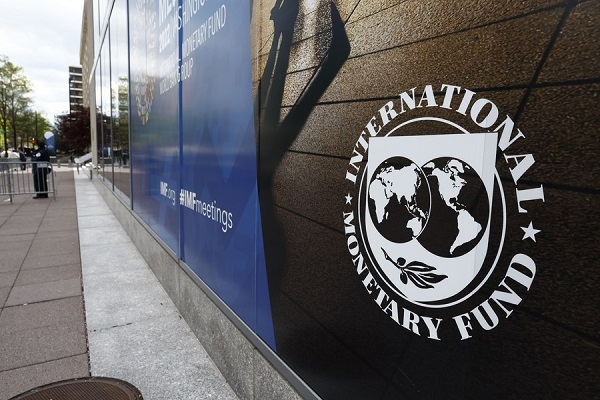


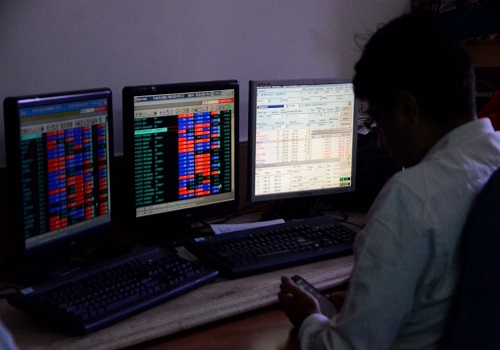






More News

Telecom Sector Update : Another lifeline for Vi ? pushing the can further down the road by M...
